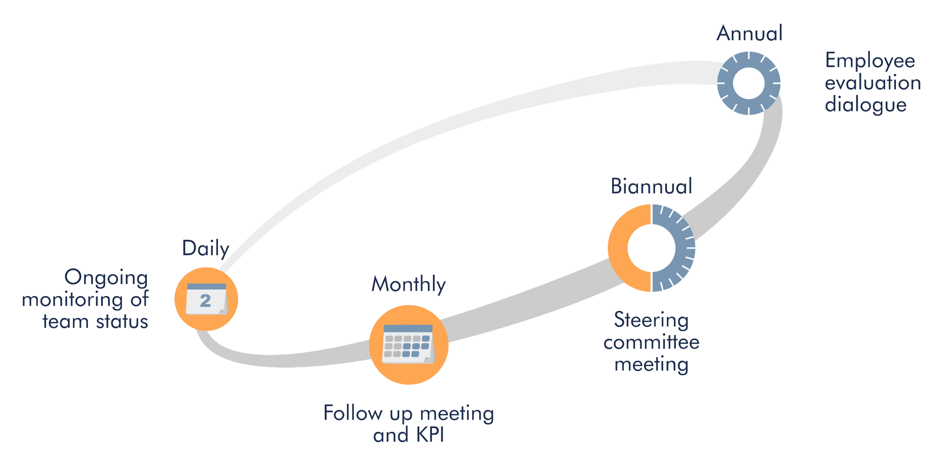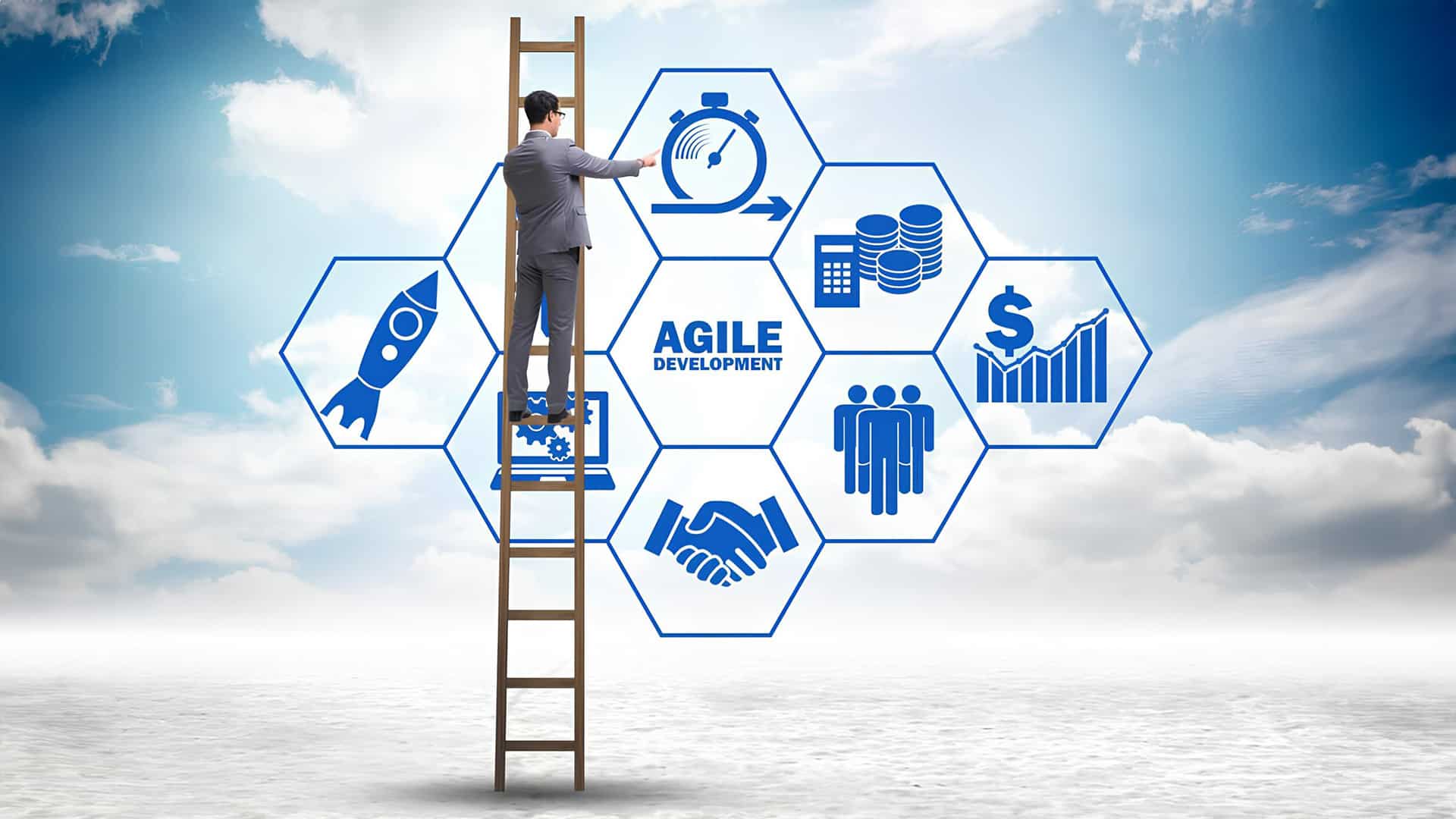Building a Long-Lasting Collaboration Within the Team
Step 2: Integration
15. June 2022
Proven processes for integration and tools for monitoring the quality of cooperation are the formula for success.
If the experience of working in a distributed setting is new for any of those involved, cultural differences may well exist between companies and their outsourcing partners. How things are done, workplace norms, ways of communicating – all these can lead to communication issues and consequently suboptimal productivity.
Reduced face-to-face interactions means issues can become complicated and misunderstandings arise where they needn’t be. While it is eminently possible, it can be difficult to find a vendor whose culture matches that of your organisation. That is why integration and relationship management should be in focus at all times.
If you want your partner team to be well integrated into your organization, the rule couldn’t be simpler: treat them as an extension of your own team. While that requires some time and effort on your part, the RIO for the time spent more is more than justified. Your partner team will learn more about your business, make better, more informed decisions, have better morale and greater commitment to your mission, your company and your project. This will result in higher productivity and reduced churn.

Everything starts with onboarding
The onboarding of a new team is a bit like a honeymoon in professional collaboration. At this stage, everyone has a golden opportunity to learn about culture, adopt a communication style and get deeply involved into technical aspects of the project.
Smooth onboarding of a newcomer creates the first impression of the company, project and its people. And it’s better to do it well at the outset: it is always easier to start out right at the beginning than have to make things right after a poor start.
Onboarding developers into a complex legacy is not more or less difficult if those developers are working remotely, it is, though, different. Using 15 years of accumulated best practices at Conscensia, our delivery managers, HR and team leads know how to help and how do it right.
At Conscensia the transition period includes:

From the very beginning our newcomers are taught about the differences they might face working in a multicultural environment. It sets the right expectations and provides cultural insights which smooth future collaboration.
The transition period lasts about 6 weeks. During this time a new team member dives into the business domain and the project itself. Newcomers are invited to a series of introductory meetings, various workshops and business domain trainings, and also a first business trip to the client. Most of our developers have a trip to meet their teammates onsite and in person. This is of significant value in establishing working relationships between people, not just with user pics in messengers. And its not just about knowledge transfer or understanding domain: its social capital; it directly facilitates positive working relationships inside a distributed team.
An important part of the integration process (which is sometimes forgotten) is support in building relationships with teammates. At Conscensia, the HR department regularly organizes corporate events – Company Day, New Year’s party, summer picnic, Happy Friday, Family Day (with e.g. Danish colleagues) and a lot of smaller spontaneous team-building events. All of these taken together help us maintain the unique family atmosphere we have at Conscensia, where a coworker is not only coworker, but also a friend.
“Integration of a new team member to the team is never ending process. It’s like the relationship with your partner, you have to develop them everyday. Good personal connection is crucial for successful collaboration, having chemistry inside your team is a precursor to building trust and best possible synergy in your cooperation.”
Ivan Popovych (Software Developer, Team Lead at Systematic)
At Conscensia there are well-designed processes for integration and tools for monitoring the quality of cooperation between the customer and the team.
We create teams where all members express opinions and contribute irrespective of their location.
A cycle of video meetings held by Delivery Managers for a short update/discussion of the team performance, and status on any open topics in relation to the team secure that both sides are aligned in the understanding of the current collaboration.
Ongoing Collaboration Lifecycle:

In general, our Delivery Department takes care of the following goals:
- Support implementation of the right processes for the client to get maximum value from the sourcing relationship with Conscensia
- Support the integration of the Conscensia client team into the client’s organization
- Actively look for opportunities for improvements in how we collaborate with our clients
- Support a high level of knowledge sharing within Conscensia
Purpose is the single biggest motivation at work the world over. By integrating your external team you can tap into this motivation and reap the benefits. Inefficiency costs resources and causes frustration. Seamless integration reduces this significantly.
Soon, you will find our next article about retention on our website.




